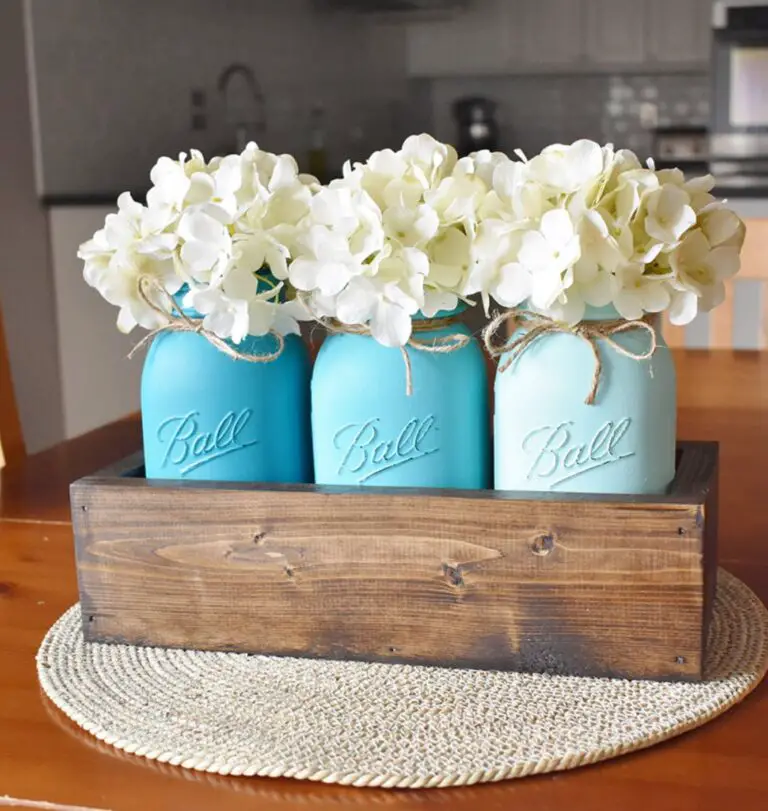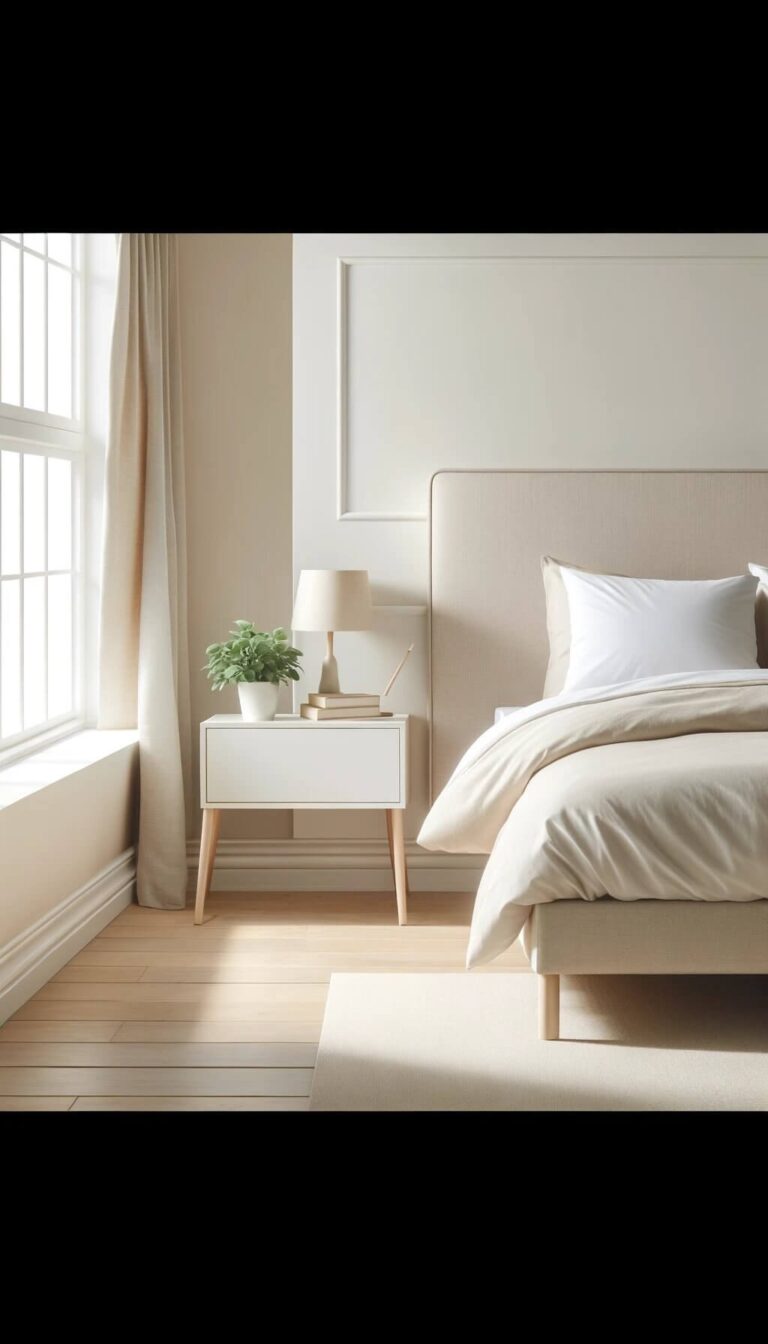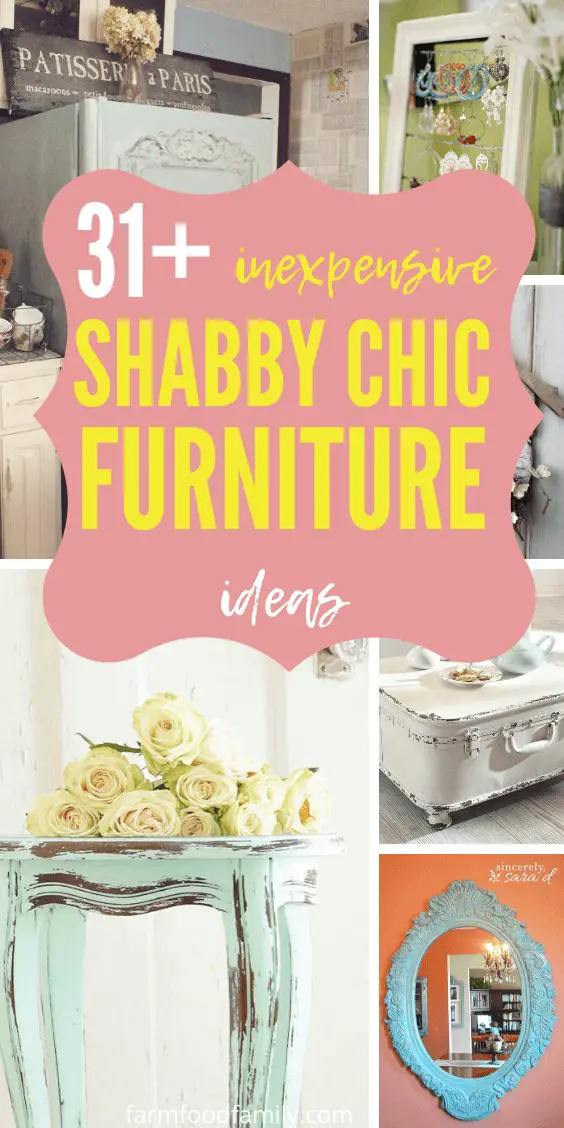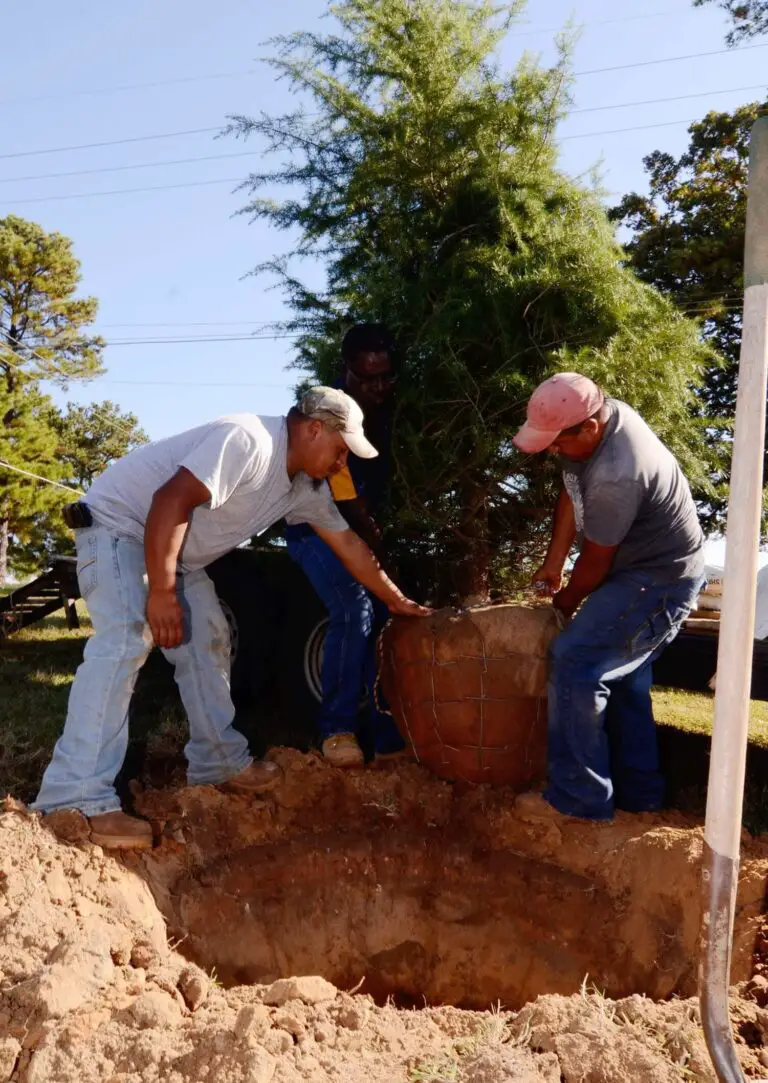20+ Types Of Fireplaces And Their Names
Fireplaces have a unique ability to transform a home’s ambiance, making it feel cozier and inviting. Their visual appeal is just one aspect of their charm, as they also serve as a hub for social gatherings. But did you know that there are numerous types of fireplaces? Each with its distinct characteristics, benefits, and drawbacks.
In this article, we’ll delve into the different types of fireplaces, exploring what sets them apart and how they can be used to create the perfect ambiance in your home.
20 Types of fireplaces
When it comes to understanding the different types of fireplaces, it’s essential to know their distinct characteristics. Let’s start by exploring the most widely recognized varieties, which often serve as a great starting point for homeowners and designers alike.
Wood burning fireplace

Experience the nostalgic charm of a traditional fireplace with this Amazon-recommended option. This vintage-inspired design embodies the cozy essence of burning wood, filling your space with warmth and a hint of smokiness. Its practicality is undeniable, making it an excellent choice during power outages. In fact, many log cabins still incorporate these fireplaces to evoke a sense of tradition and rustic elegance.
Electric fireplace

When searching for a fireplace that replicates the ambiance of coal or wood burning, I recommend checking out this model on Amazon. This particular option has gained popularity due to its ability to mimic the slow-burning experience without the drawbacks of traditional fireplaces. As it’s powered by electricity and plugged into a socket, it offers several advantages.
For instance, it eliminates the release of fumes, is easy to operate, and requires minimal upkeep – making it an environmentally friendly choice. Additionally, this electric fireplace comes in a variety of designs, catering to different tastes and styles. If you’re interested in learning more about the benefits and features of these fire mimickers, I suggest exploring our Electric Fireplace Guide 101 for a comprehensive overview.
Gas fireplace
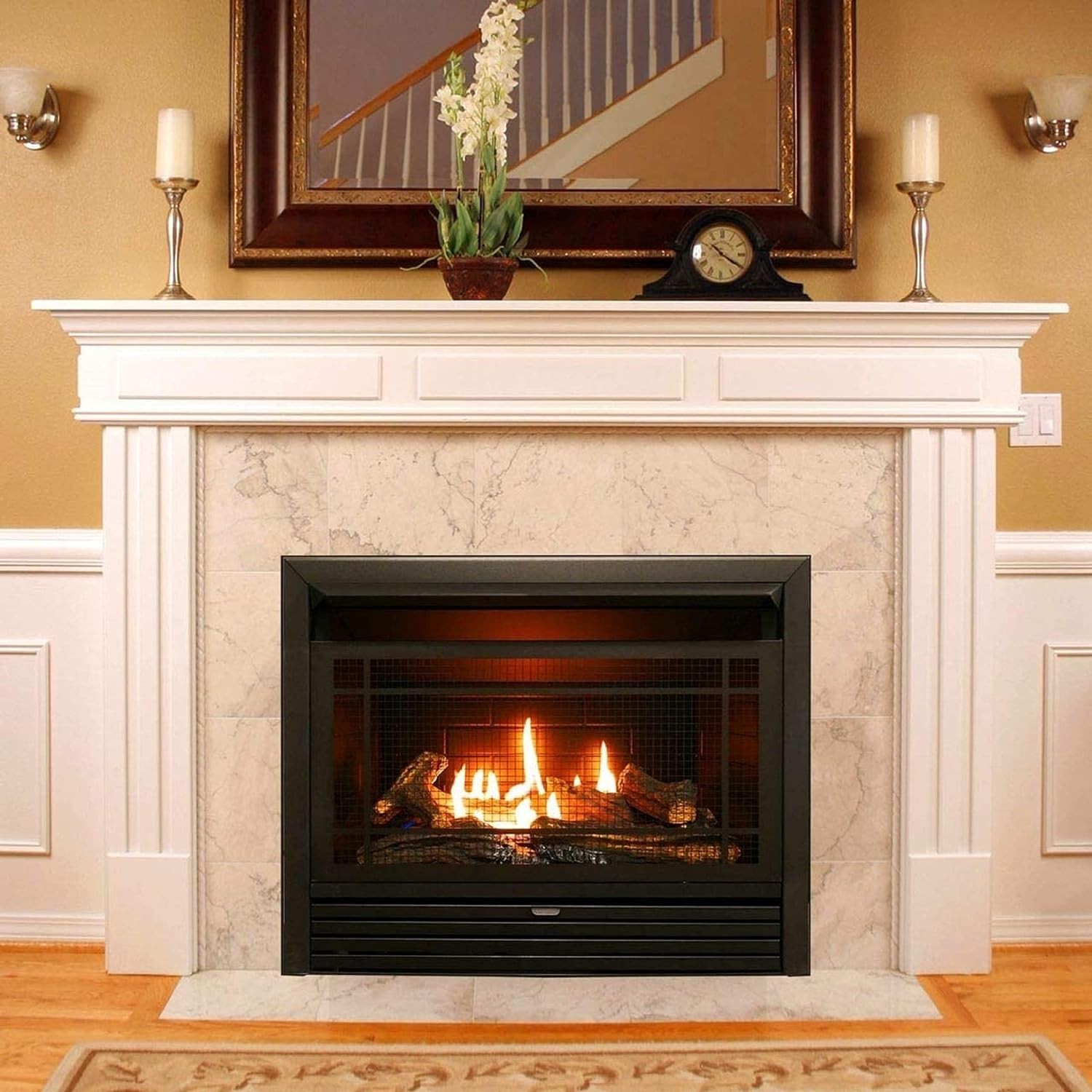
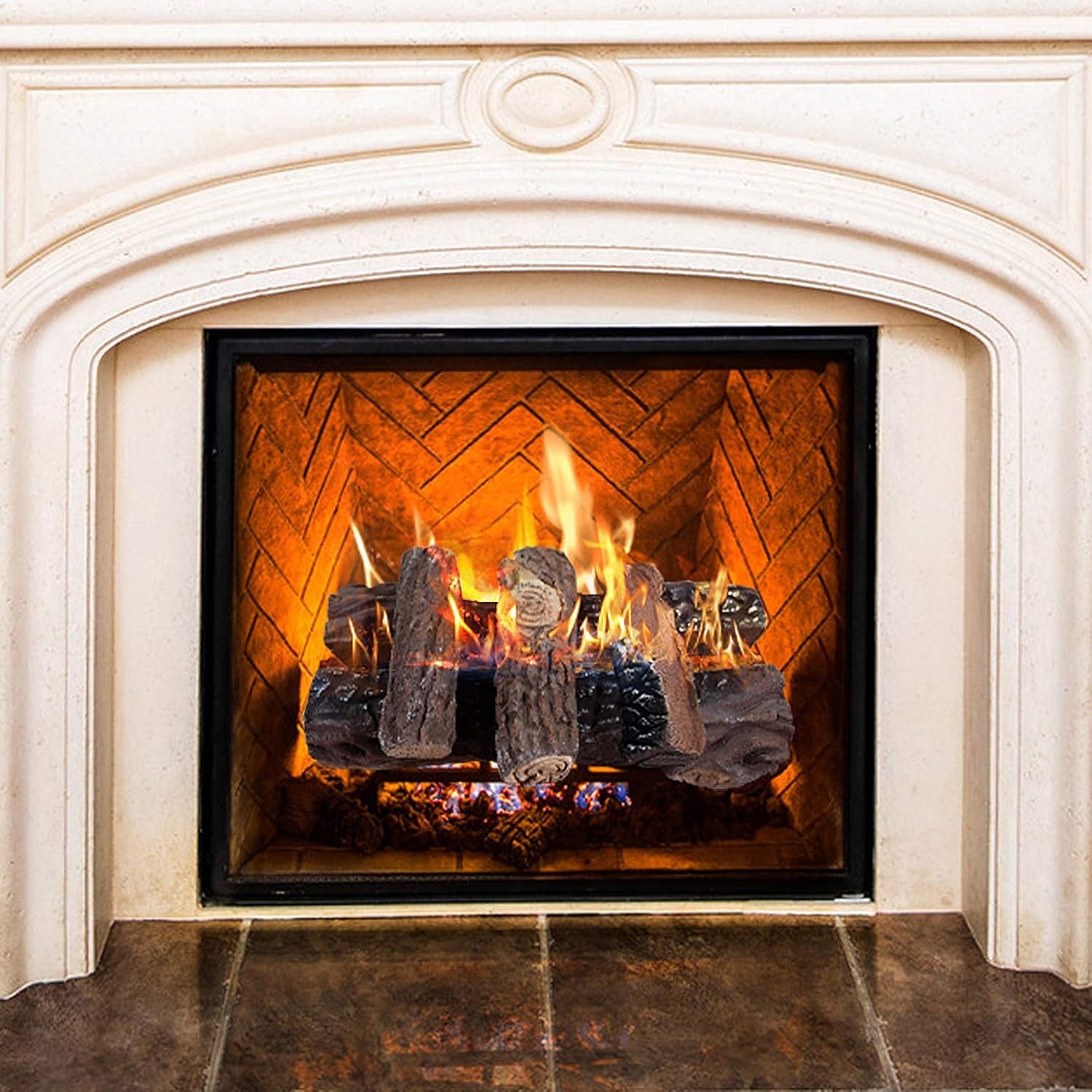
Unlike electric fireplaces, this model produces a noticeable amount of smoke, necessitating a dedicated vent for its release. The real wood is lit by the gas fireplace, but with the added control of regulating the gas flow to ensure a consistent burn. To turn it off, simply switch off the gas supply. This type of fireplace comes in two distinct forms: gas fireplace inserts and gas log fireplaces.
Gas fireplace inserts are often mistaken for traditional fireplaces due to their similar appearance, but they offer a cleaner alternative by being installed into an existing fireplace. Not only is this option more economical, but it’s also environmentally friendly as it replaces the need for wood. To check out this model, please visit Amazon.
Gas log fireplaces are another nod to traditional fireplaces without the hassle of actual wood.
Typically constructed from ceramic materials, though oakwood or driftwood designs are also available. Some key benefits of gas log fireplaces include low maintenance requirements, no dust or soot accumulation, and the elimination of the need for real wood altogether.
Gel fireplace
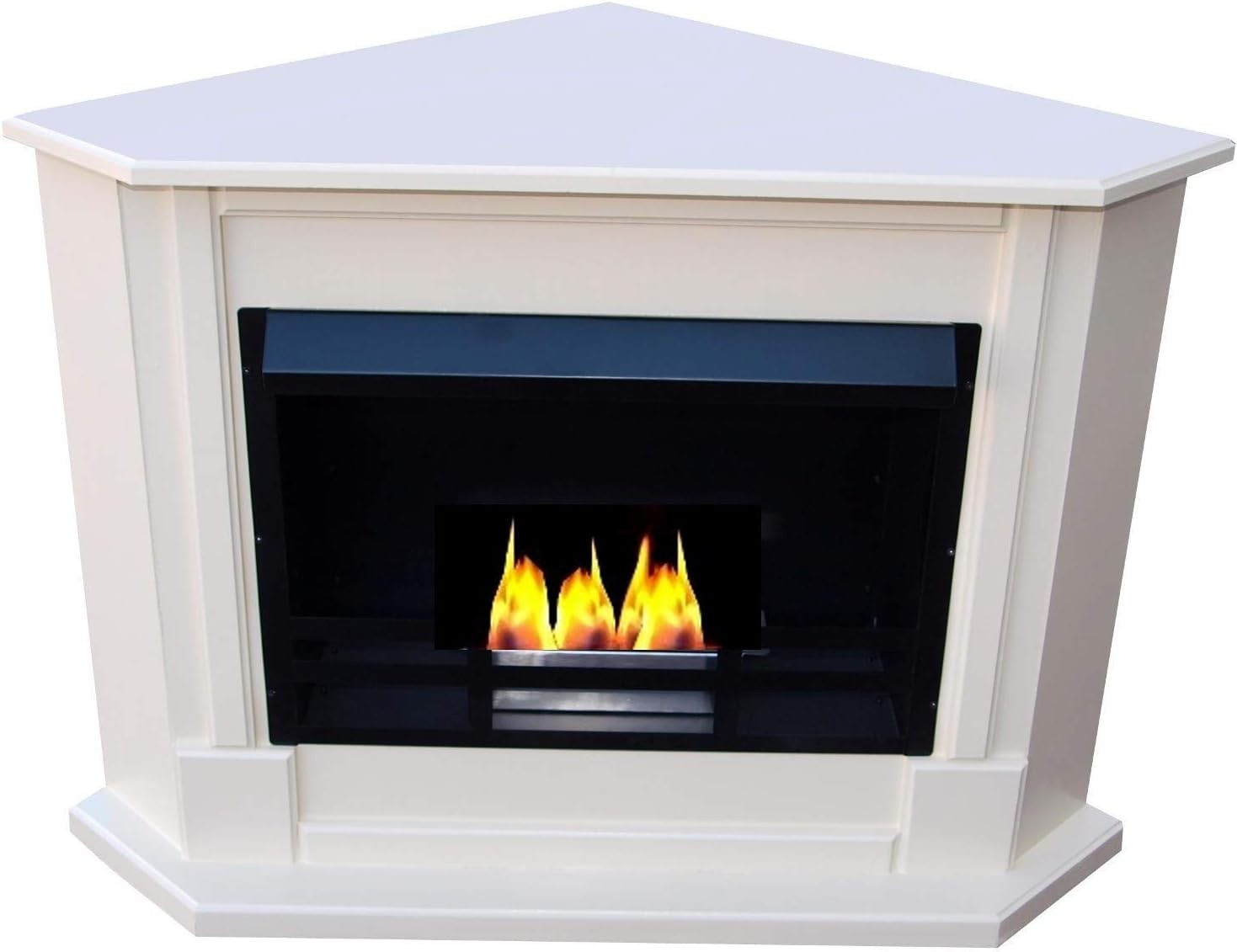
When considering a fireplace option for your home, consider the underrated benefits of a gel-fueled model available on Amazon. While less popular than gas or electric alternatives, this type of fireplace has distinct advantages. For instance, installation is remarkably straightforward as it doesn’t require vents, pipes, or electrical connections – simply self-contained and ready to go. Additionally, you’ll enjoy the authentic flame of a burning fire without the drawbacks of smoke and fumes.
Ethanol fireplace
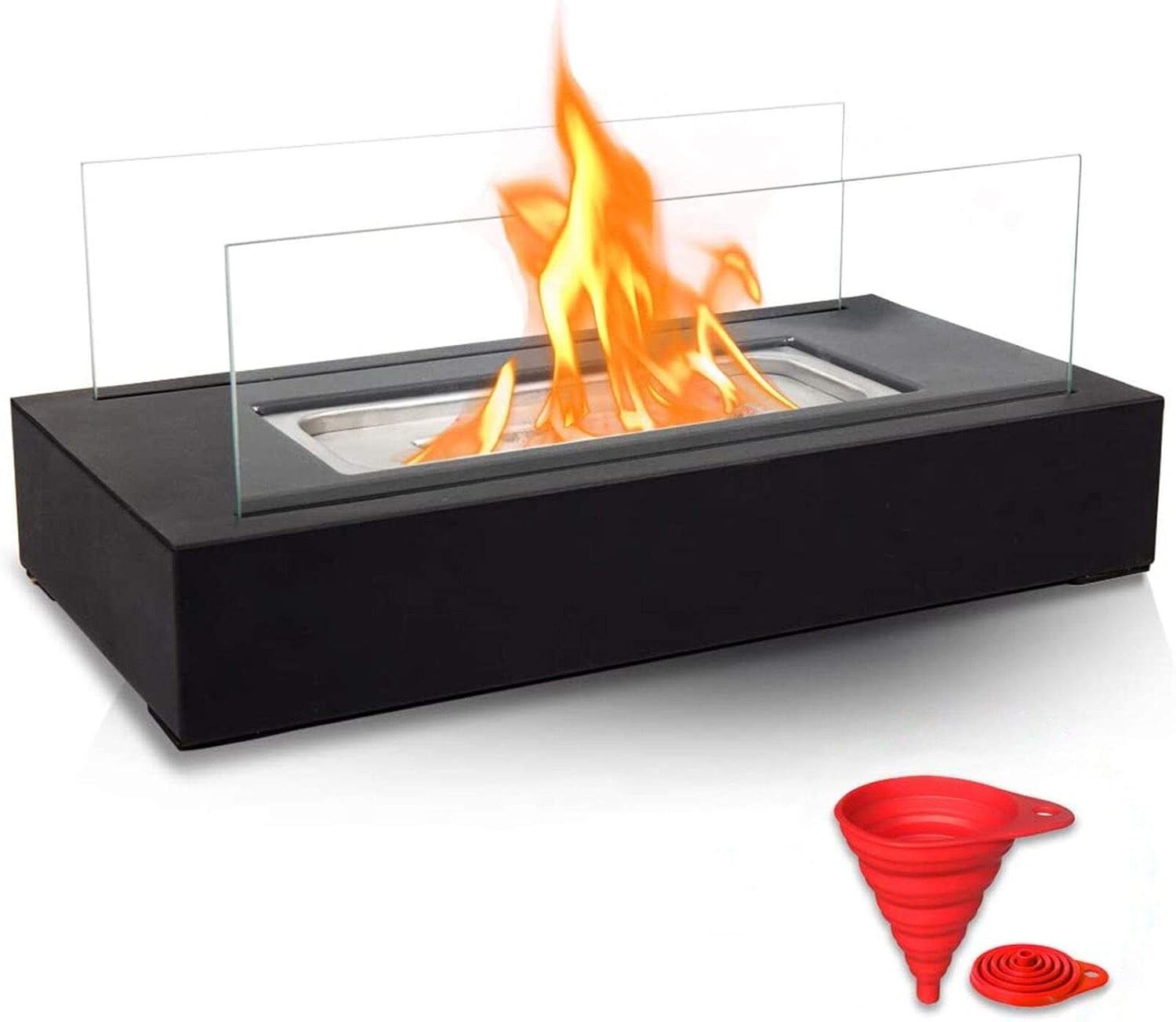
When it comes to ethanol fireplaces, I highly recommend checking out this particular model on Amazon. What sets it apart from its gel-powered counterparts is the use of bioethanol fuel for ignition. From a build perspective, the ethanol fireplace boasts a lightweight design that makes installation a breeze. Its versatility doesn’t stop there – it can be mounted in your preferred location without much fuss.
One notable advantage over traditional gel fireplaces is the ability to adjust and control the burner’s output, allowing you to easily turn it on or off as needed.
Traditional open-hearth fireplace
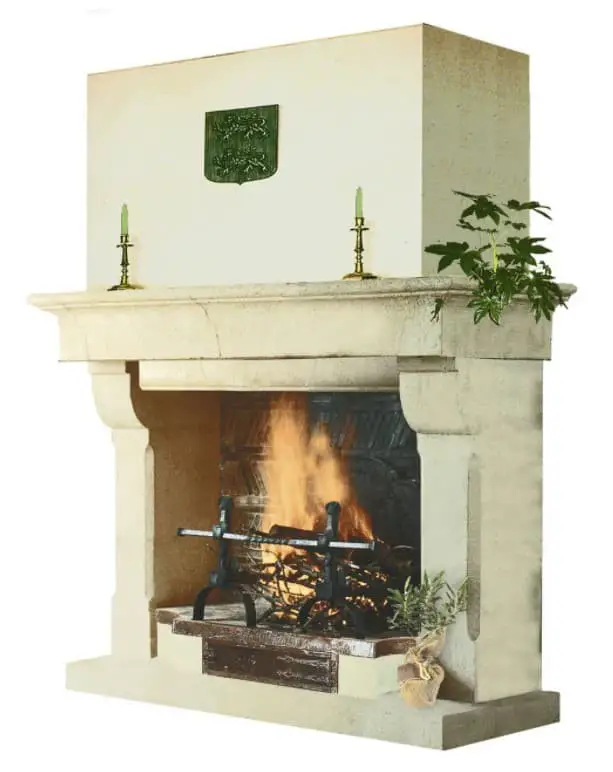
Typically constructed from stone or brick and built directly into a wall, this type of fireplace requires a chimney or flue for ventilation purposes. Fueling the fire would necessitate the use of traditional wood, underscoring the importance of meticulous planning to accommodate this design. A significant restructuring effort is typically needed to prepare the space for installation, highlighting the need for careful consideration when deciding on this type of fireplace.
Wall-mounted fireplace
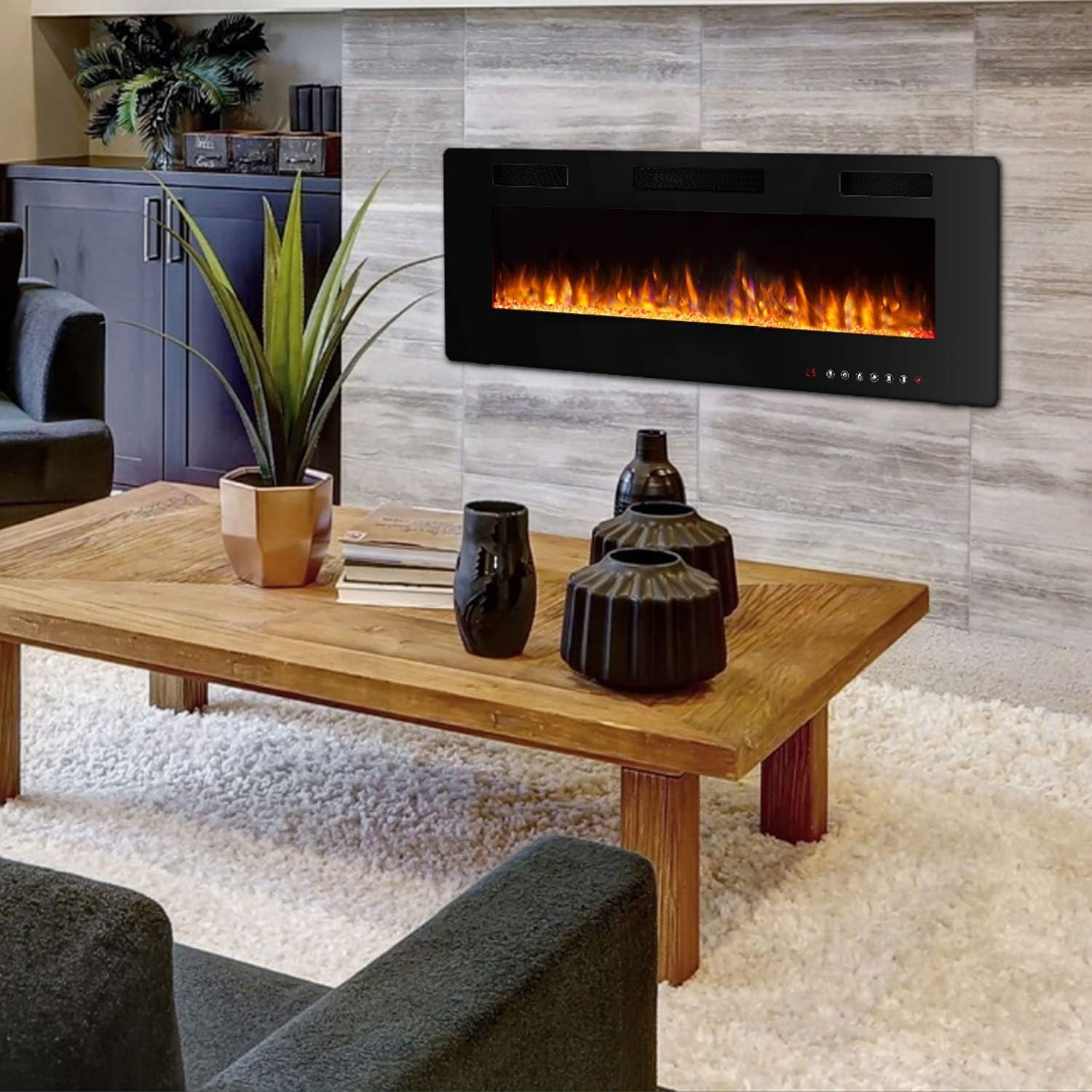
For those living in lofts or compact spaces, a wall-mounted fireplace offers unparalleled practicality. Not only are they a great option for installation, but many models can be moved around, making them perfect for exterior walls. Alternatively, you can opt for a traditional interior wall-mounted fireplace that’s installed by the chimney. Check out this particular model on Amazon for a seamless and convenient setup.
Free-standing fireplace
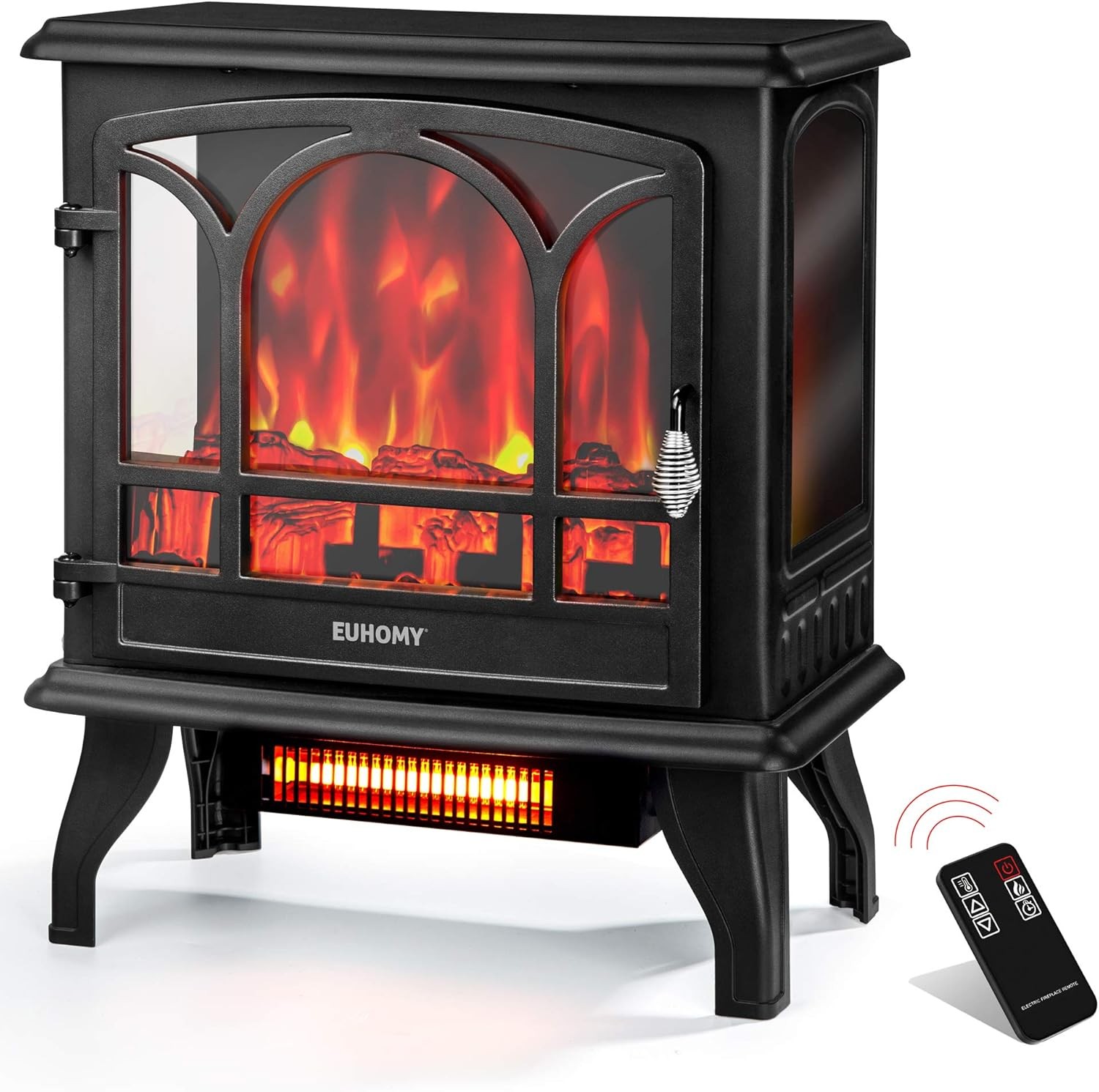
For those seeking an alternative to traditional open hearth fireplaces, this option on Amazon stands out. Characterized by its versatility, it can function as a free-standing unit with a portable enclosure, be mounted on the wall or even installed in a fireplace mantel that mimics the look of a traditional fireplace setup.
Tabletop fireplace
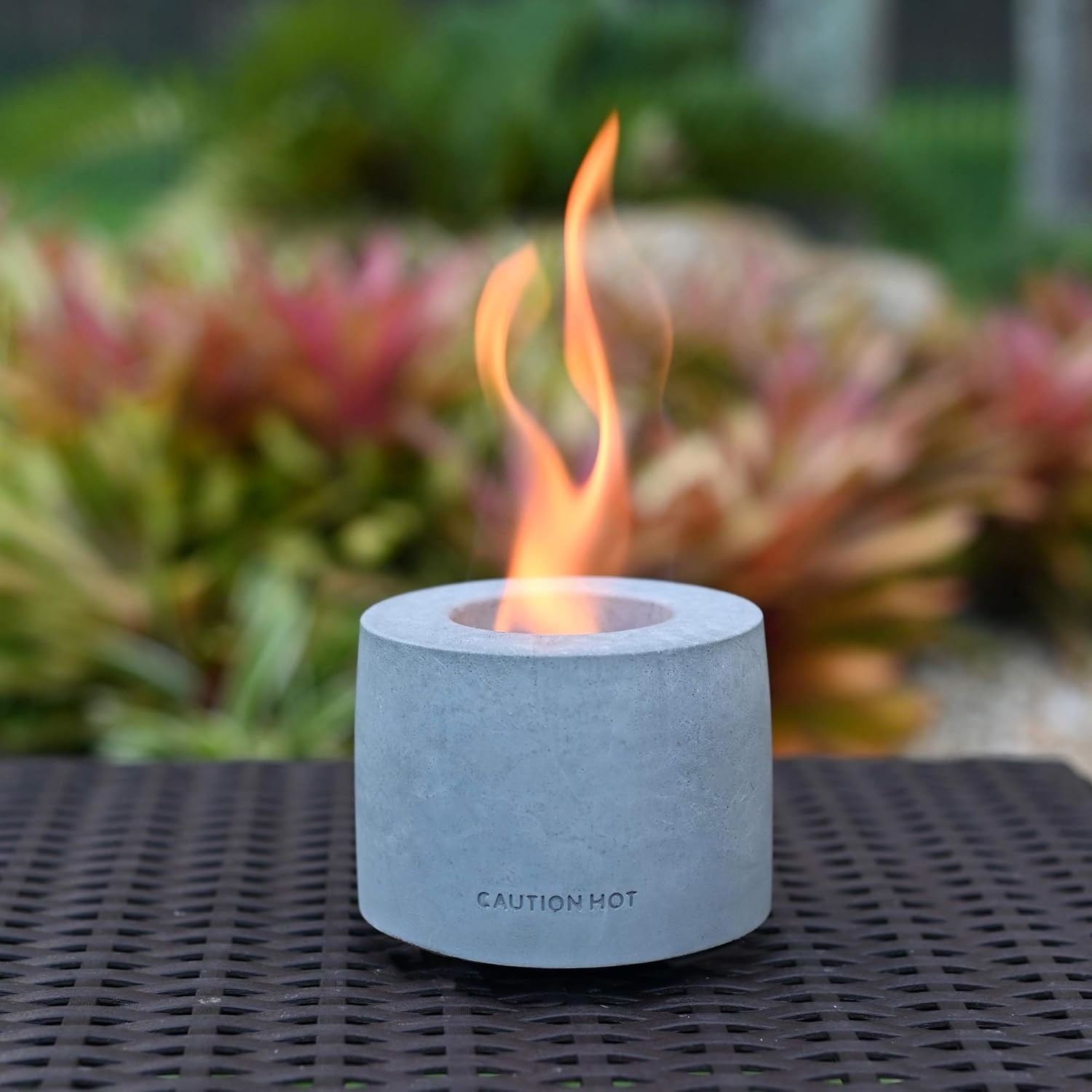
When looking for a unique and functional addition to your outdoor space, consider this portable fireplace found on Amazon. Lightweight and easy to move, it can be relocated to suit your mood or party atmosphere. While its sleek design makes it a stylish feature in a compact room, it truly shines as an outdoor fireplace, perfect for cozying up on chilly evenings.
Hanging fireplace
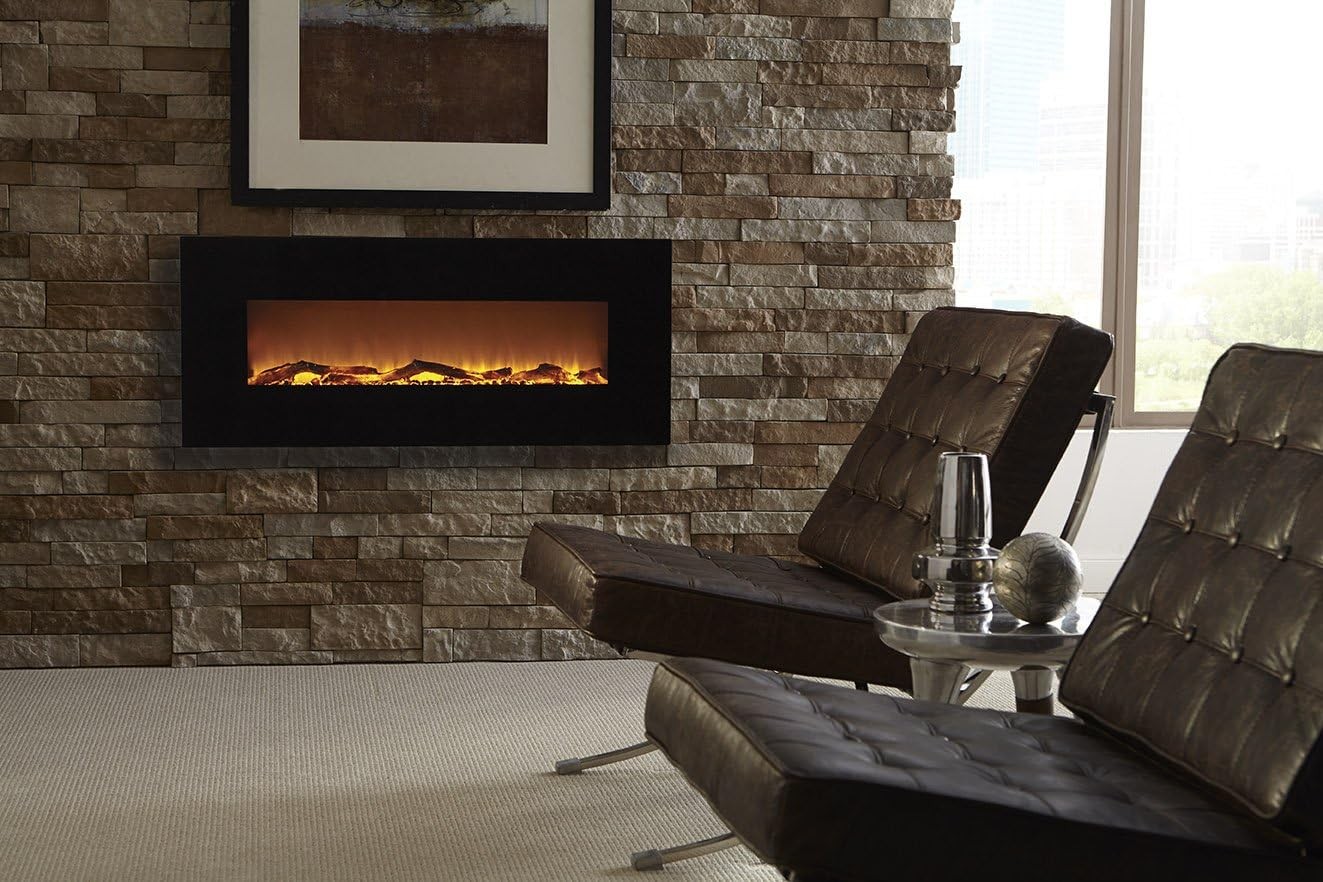
Suspended fireplaces on Amazon offer a sleek and modern twist on traditional designs. This particular model is mounted to the ceiling via its own vent pipe, creating a striking visual effect that draws the eye upwards. Depending on the design, these fireplaces can be surprisingly unobtrusive, making them a great choice for open-plan living spaces or apartments where space is at a premium.
Typically constructed from metal, this material provides durability and easy maintenance, ensuring your suspended fireplace remains a stylish focal point in your home for years to come.
Two-sided fireplace

This type of fireplace installation offers the unique benefit of being situated at a crossroads between two rooms, allowing both spaces to share in the warmth and ambiance it provides. Additionally, its versatility makes it an excellent choice for dividing living spaces like dining and living rooms, or even separating sleeping and sitting areas within bedrooms.
B-vent gas fireplace
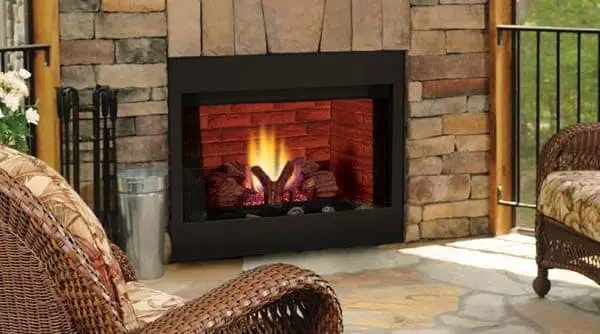
The decorative gas fireplaces, on the other hand, prioritize aesthetics over functionality. They feature a single chimney for ventilation and are characterized by their front glass panels with adjustable openings at the top or bottom to accommodate coal balls or wood chips. One notable aspect of these units is that none of their components can be replaced individually. Instead, they rely on a pilot light system for operation.
Vent-free/ventless gas fireplace
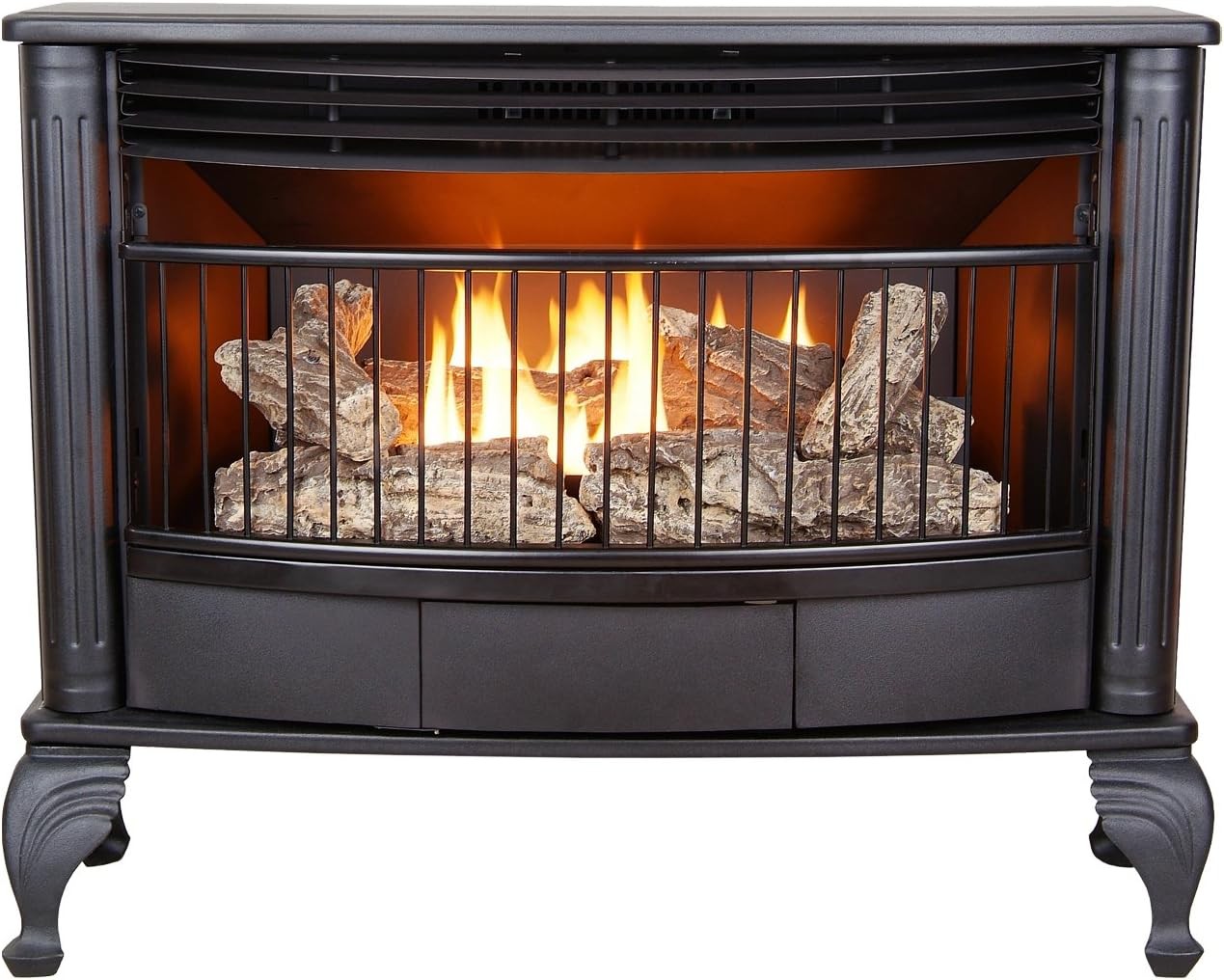
When it comes to fireplaces without chimneys, two primary options exist: vent-free and ventless models. Although differing in their intended use, both types operate on the same fundamental principle of providing ample heating. Characterized by metal or masonry enclosures, these fireplaces are often found in rural settings and trailer homes, offering a cozy warmth to their occupants.
Burning stoves
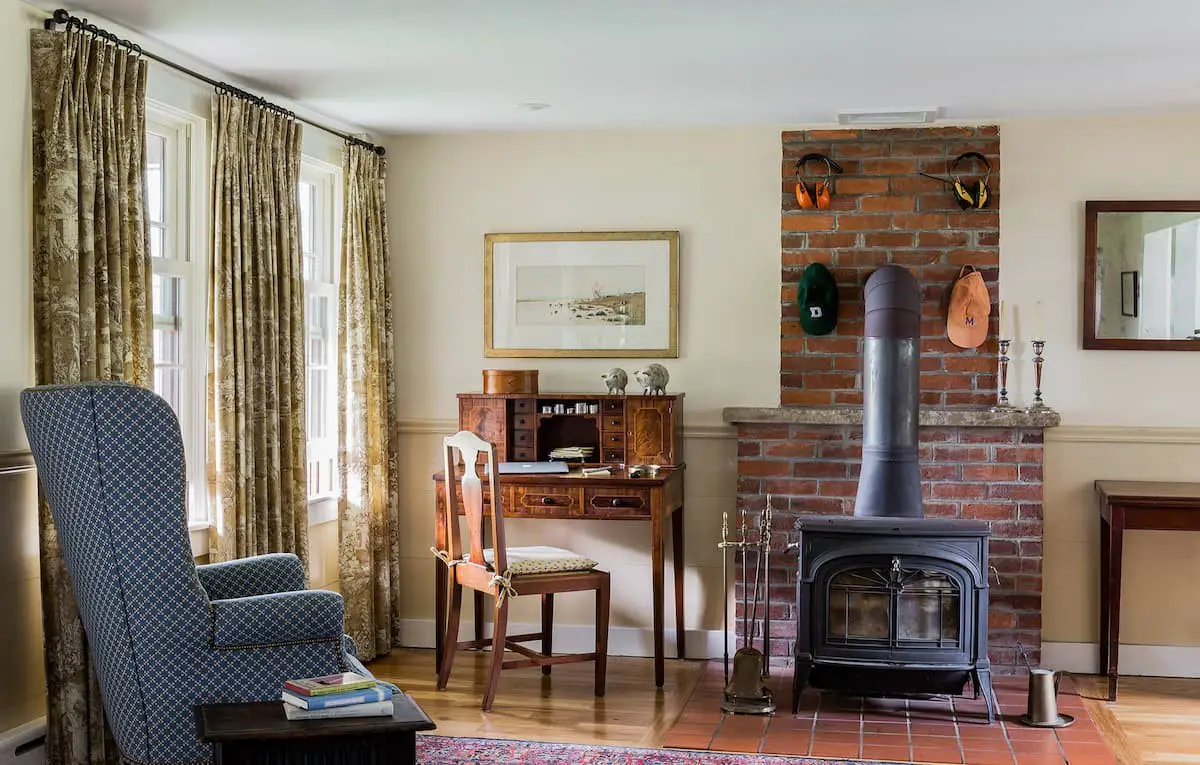
This type of stove is often self-contained within a sturdy box made of cast-iron or solid steel, featuring an integrated metal pipe for smoke venting. Its portability allows it to be used for camping trips and outdoor excursions, offering a more efficient alternative to traditional open hearths. Notably, it has earned high marks from the Environmental Protection Agency for its efficiency.
Outdoor fire pit
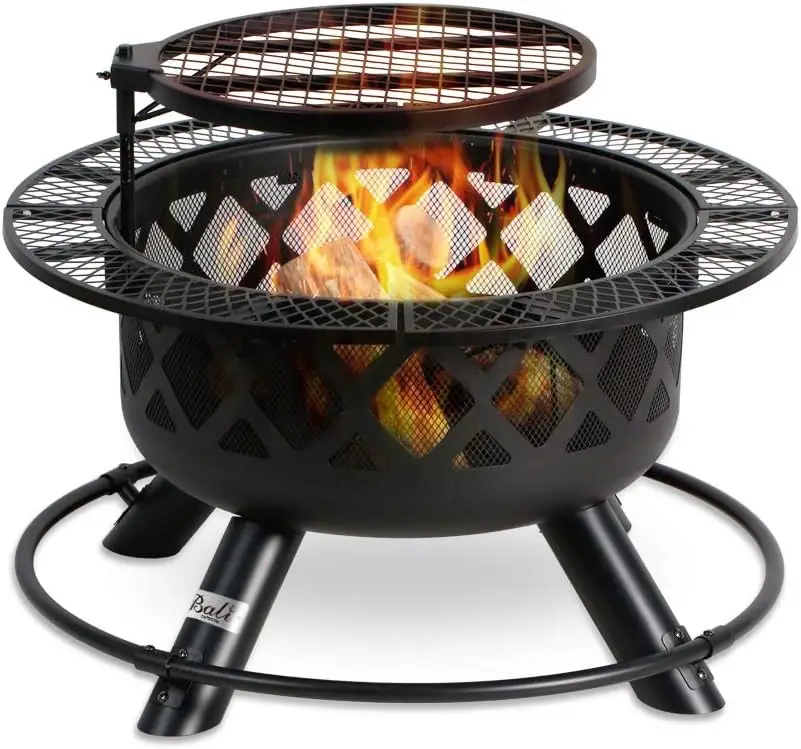
If you’re looking for a way to bring people together and create lasting memories, consider investing in an outdoor firepit. Not only are they more budget-friendly than indoor fireplaces, but they’re also energy-efficient and can be installed almost anywhere. Just make sure to check local ordinances before installing one, as some areas have restrictions on outdoor fire pits.
Imagine gathering with friends and family around a warm, crackling fire – it’s the perfect setting for making memories that will last a lifetime.
Mantle fireplace
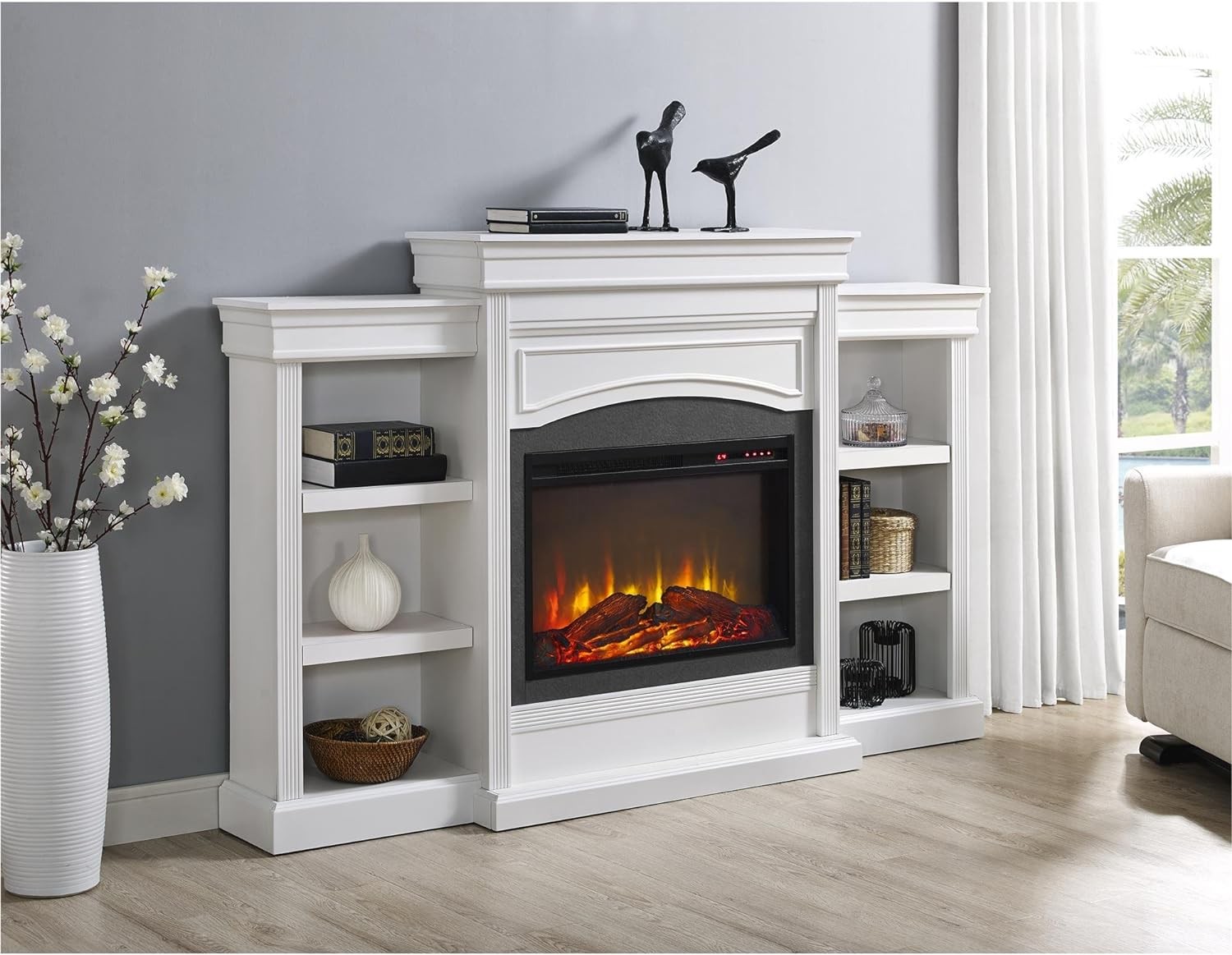
When it comes to bringing warmth and coziness to your home, consider investing in an innovative alternative to traditional fireplaces: mantles with gas or electric fireplaces. These sleek designs mimic the charm of classic wood-burning fireplaces, minus the hassle of chimneys or vents. Typically crafted from high-quality wood, such as oak or maple, these modern mantles offer a stylish and functional way to enjoy a crackling flame without the mess or maintenance of traditional wood fires.
Zero clearance fireplace
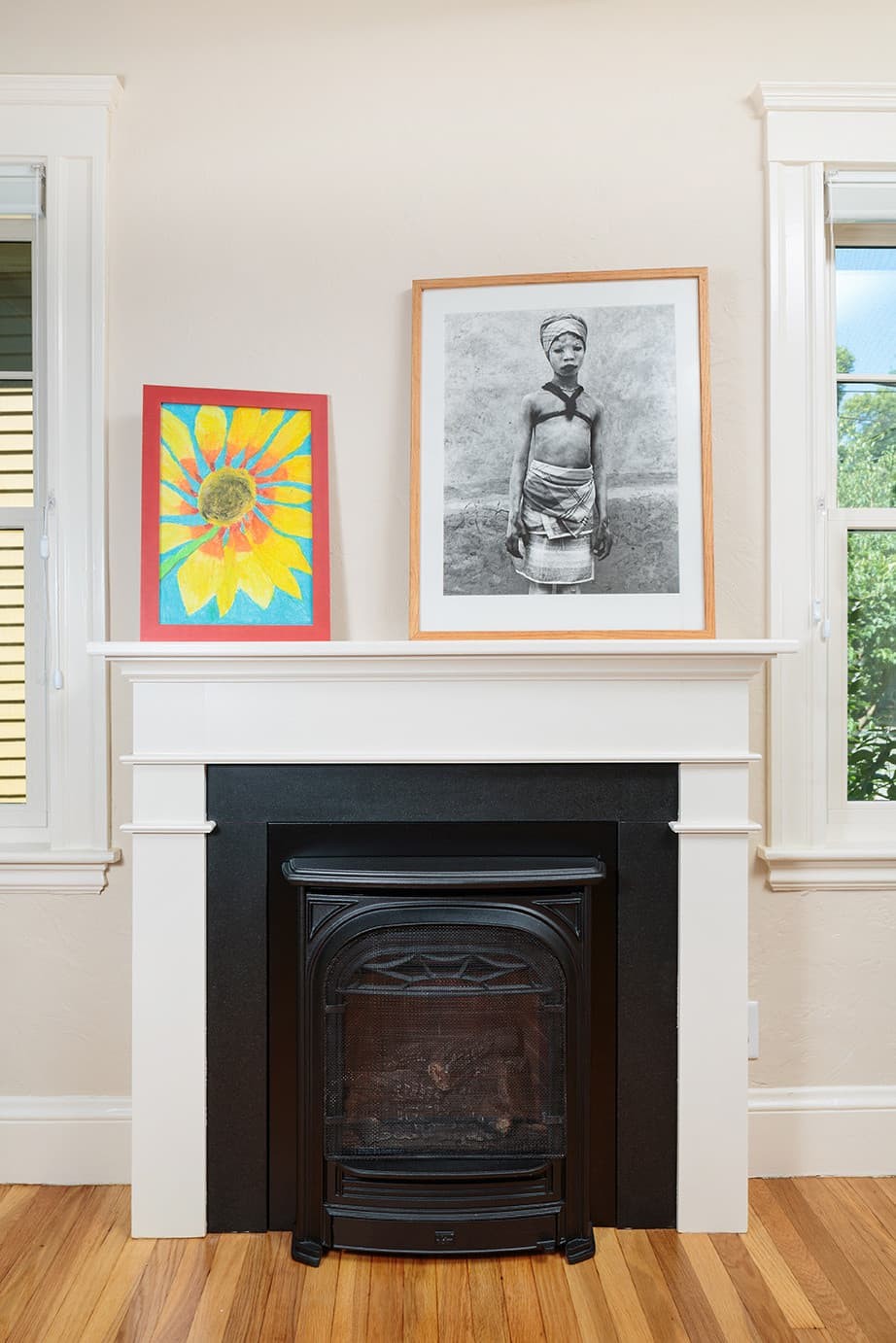
This cutting-edge indoor fireplace design eliminates the need for a gap or clearance between the firebox and the home’s walls. In contrast to traditional designs, this type of fireplace can be installed directly adjacent to various materials such as wood, stone, and sheetrock without posing a risk of fire or damage, making it an ideal choice for homeowners seeking a seamless and safe installation experience.
Fish tank fireplace
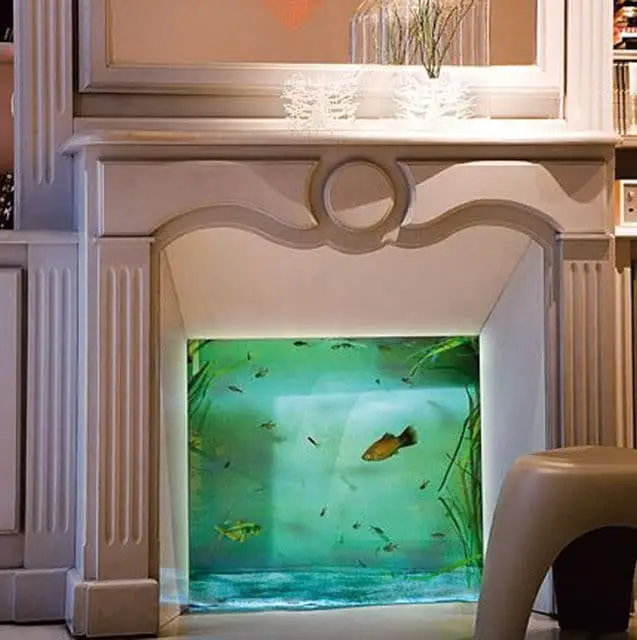
One of the most contemporary fireplace designs, this style is commonly found in restaurants, hotels, and other commercial establishments. Typically installed within a counter and enclosed by glass sides, it can also be mounted on a wall for a sleek, space-saving solution. In terms of fuel type, these fireplaces are often powered by gas or electricity, offering a convenient and low-maintenance option.
High-end fireplaces
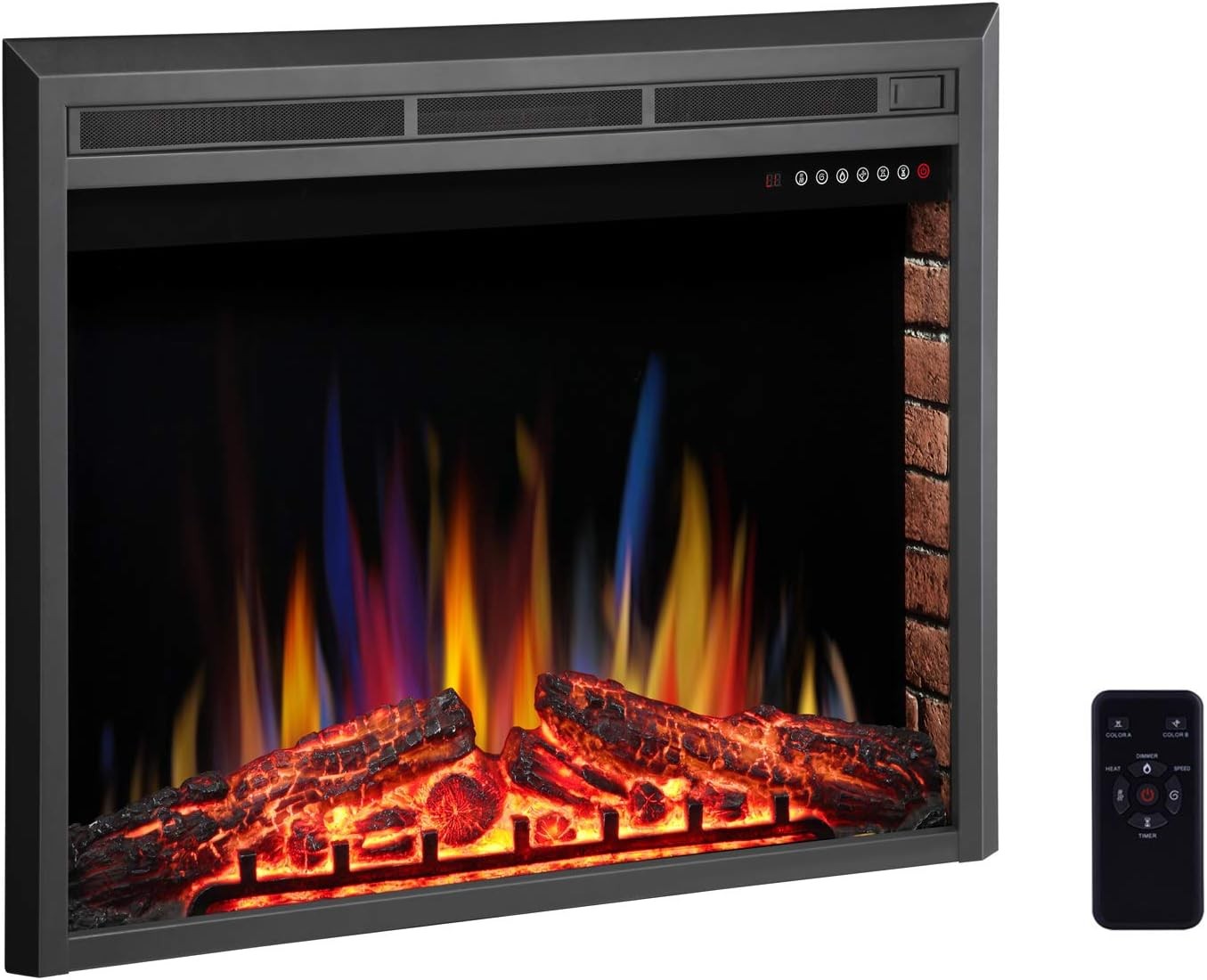
When it comes to finding the perfect fireplace, Amazon has a wide range of options available. One standout model is a unique blend of form and function. This sleek design combines modern materials like marble, industrial style concrete or stone with a stylish glass finish, making it a versatile addition to any room. With the option to be vented or unvented, free standing or mounted, and powered by gas, wood burning, or electricity, this fireplace offers unparalleled flexibility and convenience.
Water vapor fireplace
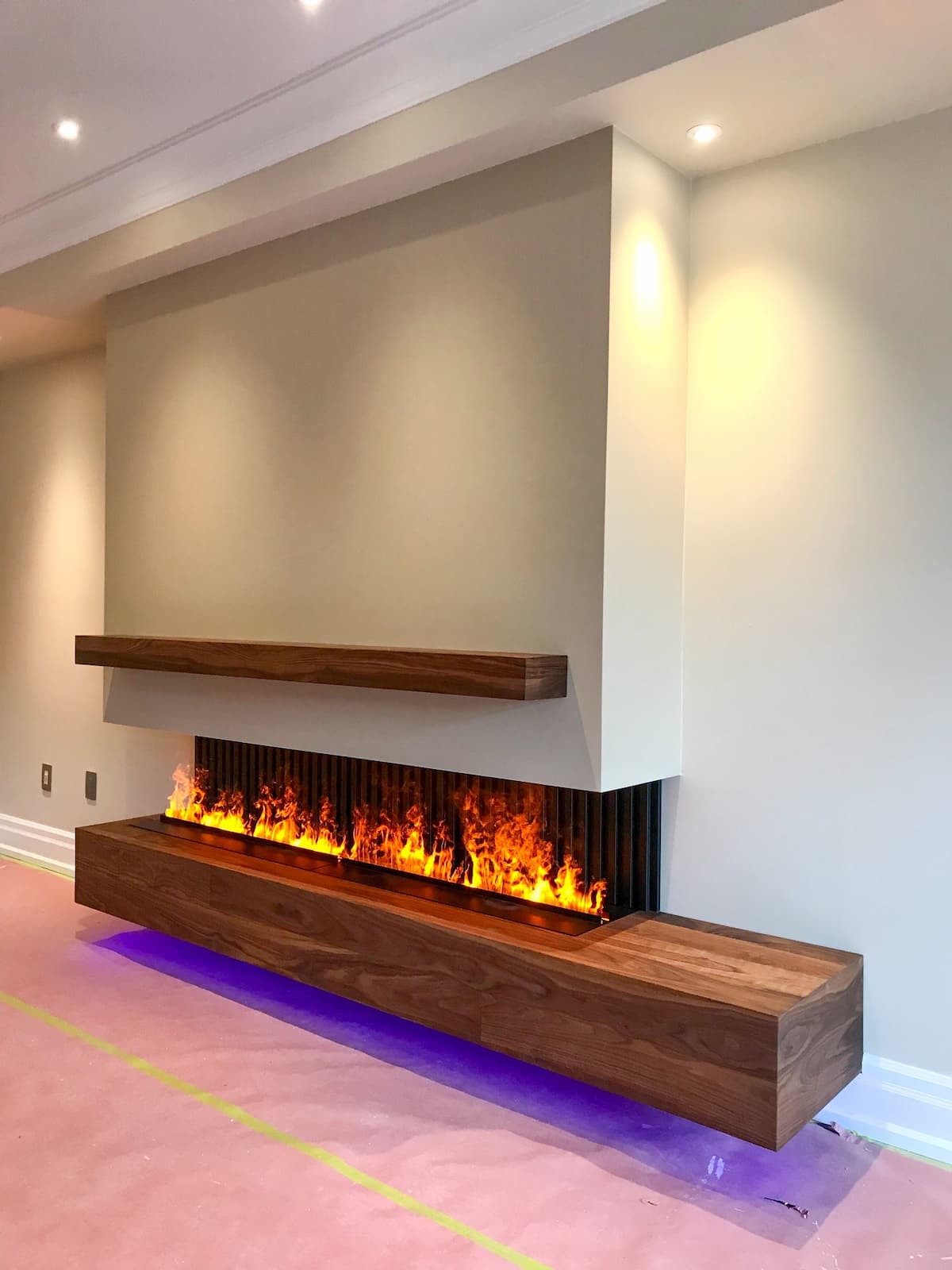
Imagining a traditional flame without the risks associated with actual fire is now possible thanks to innovative technology. The 3D flame imitation in this device doesn’t just visually replicate the effect of flames but also accurately recreates the crackling sound of a roaring fire, minus the hazards that come with it. Additionally, its mist reflecting light feature mimics the appearance of flickering flames, giving off a warm and modern ambiance.
What’s more, these flameless fireplaces operate using tap water and electricity, making them ultra-safe and convenient options for indoor use.
Fireplace materials
A fireplace’s distinct character is largely defined by the material used to cover it. Among the various options, four materials stand out for their popularity: stone, tile, wood, and brick. Plaster or clay can also be used, but they are less common. Stone remains the top choice, followed closely by tile, wood, and brick. When it comes to stone fireplaces, certain styles have gained widespread appeal, including ledgestone, fieldstone, stone concrete, brick stone, and marble.
Fireplace buying guide
When considering the installation of a fireplace in your home, it’s crucial to weigh various factors to ensure a well-informed decision. A simple yet comprehensive buying guide can help navigate the process, providing valuable insights and considerations to keep in mind.
Choose fireplace installation
When it comes to fireplace installations, there are several popular options to consider.
These include traditional open-hearth designs, freestanding fireplaces that can be placed anywhere in a room, wall-mounted units that save floor space, built-in fireplaces that become a natural part of the home’s architecture, compact tabletop models perfect for small spaces, hanging fireplaces that add visual interest to a room, two-sided fireplaces that allow multiple rooms to share the warmth and ambiance, as well as ribbon-style fireplaces that offer a sleek and modern look.
Location
When selecting a fireplace, the location where it will be installed often takes precedence over other considerations. Exterior walls typically accommodate traditional wood-burning fireplaces, which require ventilation to function properly. In contrast, interior walls are better suited for electric, self-contained, ethanol, and gel fireplaces, as they don’t necessitate exterior venting. This fundamental consideration can significantly impact the type of fireplace that’s ultimately chosen.
Fireplace fuel type
When it comes to designing and installing your fireplace, there are several key factors to consider. The first step is deciding on the type of fuel you want to use. This can range from traditional wood-burning fireplaces to more modern options like gas, electric, and ethanol fireplaces. Each fuel type has its own unique characteristics, advantages, and installation requirements, so it’s essential to choose the one that best fits your needs and preferences.
Fire safety
When it comes to fireplace safety, one type stands out as particularly crucial: wood burning fireplaces. Requiring the most vigilance when it comes to fire caution, they demand attention to detail to prevent accidents. In contrast, electric fireplaces offer a safer alternative, while gel, ethanol, and gas fireplaces are generally suitable for homes with children and pets.
Maintenance
While wood burning fireplaces are a cozy addition to any home, their upkeep can be a significant challenge due to the presence of fumes, soot, and wood scraps. To avoid these issues, many homeowners opt for more low-maintenance options like electric fireplaces. These alternatives provide a similar ambiance without the hassle of frequent cleaning and maintenance.
Cost
Fireplace installation costs can be a significant aspect of your overall expenditure, with prices ranging from a few hundred dollars to upwards of $15,000. For instance, gas, gel, ethanol, and electric fireplaces typically fall within the $500-$3,000 price bracket, whereas wood-burning models can cost as much as $15,000 if they’re not built-in. Installation costs themselves range from $500 to $2,500, depending on factors such as location, type of fireplace, and complexity of installation.
Remote functionality
For those who prefer to live life on their own terms, installing advanced fireplaces with wireless connectivity is an excellent option. With smart technology, you can command your fireplace’s temperature and power it on or off from anywhere in the room using a remote control. This innovative feature eliminates the need for manual adjustments, allowing you to effortlessly fine-tune the ambiance of your space without getting up.
Fan and blower functionality
While fans and blowers may seem like secondary components, they play a crucial role in enhancing airflow from the fireplace vent. As affordable additions, it’s no surprise that pre-packaged kits for these upgrades are widely available, offering homeowners an easy and budget-friendly way to take their heating experience to the next level.
FAQs on Fireplaces
Beyond the various styles and designs of fireplaces, it’s equally crucial to consider a range of essential questions and considerations that will impact your decision-making process. These FAQs cover vital aspects such as safety precautions, installation costs, and practical implications for your daily life, all of which are critical factors to weigh when deciding whether a fireplace is the right addition to your home.
Which is safer: a gas or wood fireplace?
While wood fireplaces present significant safety concerns, gas fireplaces are generally safer options. The primary risks associated with wood fireplaces include the potential for hazardous fumes to accumulate, the buildup of flammable creosote, and unattended embers that can ignite unexpectedly. In contrast, gas fireplaces offer greater control over the flame, as they can be easily turned on or off using a pilot light and maintained at a consistent temperature.
This regulated heat also makes them a safer choice for households with children and pets, since the enclosed nature of gas fireplaces minimizes the risk of accidental ignition or burns.
Which is better: a vented or ventless gas fireplace?
While unvented fireplaces can be effective at evenly heating a room, they pose a significant risk due to the transfer of fumes and carbon monoxide from the gas or fuel used. In contrast, vented fireplaces offer the same level of heat efficiency with minimal safety concerns. As such, it’s still recommended to opt for a vented fireplace option.
How much does it cost to run a fireplace per month?
The estimated cost of running a fireplace varies depending on the type of fuel used and the specific model. On average, it’s difficult to pinpoint an exact figure, but a rough estimate is around 50 cents per hour for a fireplace operating at 40,000 BTUs, which can heat up to 1,200-1,400 square feet of living space.
What kind of fireplace does not need a chimney?
While traditional fireplaces often require a chimney and external venting systems, there are modern alternatives that can operate without these necessities. In fact, several types of fireplaces have been designed to function seamlessly without the need for chimneys. These include electric fireplaces, water vapor fireplaces, ethanol fireplaces, gel fireplaces, and ventless gas fireplaces.
Not only do they eliminate the requirement for a chimney, but they also simplify the installation process by not needing external vents or pipe systems.
Where is the best place to install the fireplace?
When designing a space without central heating, strategically placing a fireplace can be crucial to maximizing its warmth and ambiance. A central or near-central location is ideal, such as the intersection of the living and dining rooms, where the fireplace can radiate heat evenly throughout the area. While corner placements are possible, they may not provide the same level of even heating as a central fireplace.
Ultimately, positioning your fireplace in a way that allows it to warm the space efficiently and effectively is key to creating a cozy and inviting atmosphere.
What is the area above a fireplace called?
The term ‘mantle’ or ‘fire mantelpiece and chimney piece’ refers to a long-standing feature in open hearth fireplaces, dating back to medieval times. Initially, it served as a simple hood over the fire’s grate, designed to capture smoke before it escaped into the room. Fast-forward to today, and modern fire mantles have evolved significantly.
Now, they often come equipped with elaborate enclosures featuring jambs, a mantle shelf, and various accessories that facilitate the installation of a fireplace.
Can you put a TV above a fireplace?
Avoid placing your TV directly above the fireplace at all costs. The increased heat emanating from the surface can cause serious damage to your appliance’s electronics and circuitry, rendering it useless. If you simply must hang your TV near the fireplace, ensure it is positioned 4-12 inches above the mantle to minimize exposure to excessive heat.
Alternatively, consider placing your TV on a sturdy stand next to the fireplace, where it will no longer be the room’s focal point but remain easily accessible from the sofa.
What is the firebox in a fireplace?
The firebox is a crucial component of a fireplace, often misunderstood as being identical to the chimney, mantle, hearth, or flue. In reality, the firebox is where the combustion process takes place, setting it apart from these other structures. Typically situated at the masonry base and floor level of the room, the firebox plays a vital role in the overall functionality of the fireplace.
Depending on the type of fireplace being installed, either masonry fireplaces with stone and brick fireboxes or prefab fireboxes may be used.
Why is there a hole in the bottom of the fireplace?
In a wood-burning fireplace, the opening at the base is aptly referred to as the ash dump. Its primary function is to collect and dispose of the ashes that result from burning wood. This feature underscores the importance of regular maintenance for this type of fireplace. It’s crucial to ensure the ash dump is emptied periodically to prevent a buildup of flammable materials, thereby minimizing the risk of fires or other safety hazards.
Is it safe to paint fireplaces?
When it comes to painting fireplaces, many people assume that you can’t do so from the inside out. However, this isn’t entirely true. With the right type of paint and precautions, painting the interior of your fireplace is not only possible but also recommended. A heat-resistant acrylic latex paint with a rating of 200F is often the best choice for this task. But what if you’re dealing with a firebox?
In that case, you’ll need a paint with an even higher heat resistance, specifically one rated at 1200F to ensure your painting project turns out successfully.
Is there a health friendly fireplace?
For a healthier alternative to traditional fireplaces, consider switching to high-quality wood pellet options. Not only do they produce fewer fumes, but they’re also a more sustainable choice. Moreover, you can now find oil-scented pellets that release fragrances into the air, enhancing your overall experience.
Can I leave my fireplace on all night?
In reality, the notion of leaving any type of fireplace on all night is misguided. Even electric and ventless fireplaces, often considered safer options, still pose potential fire hazards when unattended. This principle applies universally to wood burning and gas fireplaces as well, emphasizing the importance of responsible use and proper shutdown when not in use.
How many hours can an electric fireplace run?
Before operating your electric fireplace for an extended period, it’s essential to consult the manufacturer’s manual. Each brand may have unique guidelines, but as a general guideline, most electric fireplaces can be safely used for 2-6 hours during winter months. With proper usage, you should achieve a cozy temperature that evenly warms the room within this timeframe.
What wood would be bad to use in fireplaces?
When it comes to wood burning fireplaces, not all types of wood are created equal. Some woods burn faster than others, which can be problematic for maintaining a consistent flame. It’s generally best to avoid using the following types of wood in your fireplace: fir, pine, green wood, driftwood, and leaves. Additionally, moldy, wet wood, and coals are not ideal choices as they tend to produce excessive soot that can cause problems for chimneys.
On the other hand, woods with a longer burn time make for better fireplace options. Consider using ash, birch, black locust, hawthorn, hickory, hophornbeam, oak, maple, and most fruit trees. These types of wood tend to burn slower and more efficiently, providing a cozy and warm atmosphere.
Does a fireplace add value to the home?
When it comes to boosting a home’s resale value, one feature stands out as particularly effective: the humble fireplace. According to the National Association of Real Estate Appraisers, this cozy addition can increase a property’s value by 6-12% – a significant return on investment when you consider that the cost of installing a fireplace is more than offset by the gain in value upon sale.
In fact, homeowners can expect to recoup over 200% of their total expenditure on a fireplace when they put their home on the market.
Conclusion
While we’ve explored various fireplace categories – design, installation, fuel type, and power source – it’s essential to consider their unique advantages and disadvantages when choosing one that suits your home’s style, energy efficiency, and budget. The possibilities are endless, with no limits on where or how you can install a fireplace in your abode. Will it be an indoor focal point, an outdoor feature, or perhaps a freestanding or enclosed design?
Ultimately, the decision is yours to make, allowing you to curate a cozy space that reflects your personal taste and meets your practical needs.
Related Posts
When it comes to designing a living room, one piece of furniture that often sparks debate is the coffee table. Is it a necessary element or just a trendy accessory? The answer lies in understanding how you plan to use your space and what style you’re aiming for. As an expert in interior design, I can attest that a well-chosen coffee table can greatly enhance the functionality and aesthetic of your living room. However, there are also instances where it may not be the best fit.
Let’s weigh the pros and cons of having a coffee table in your living room.

